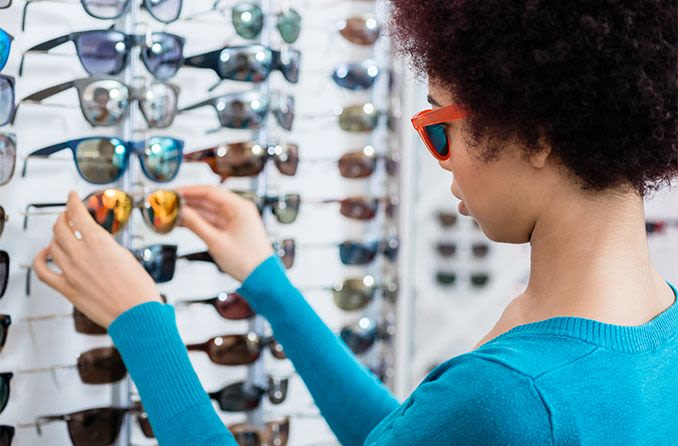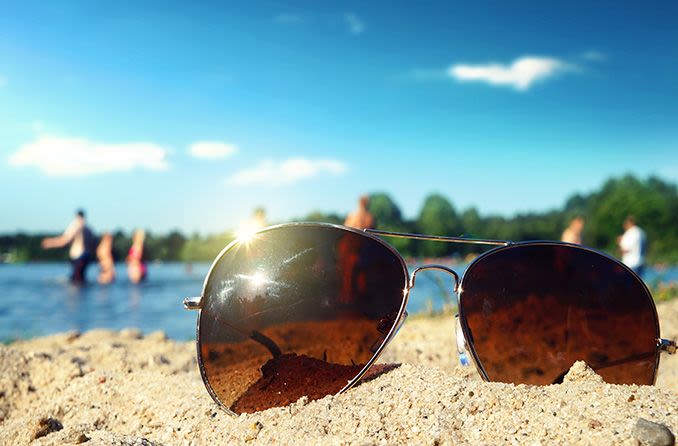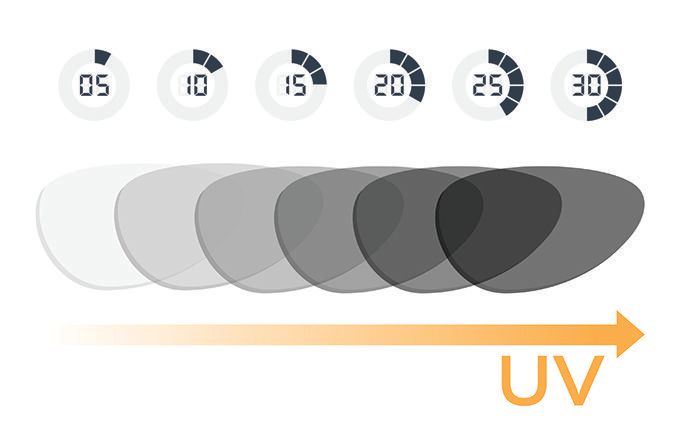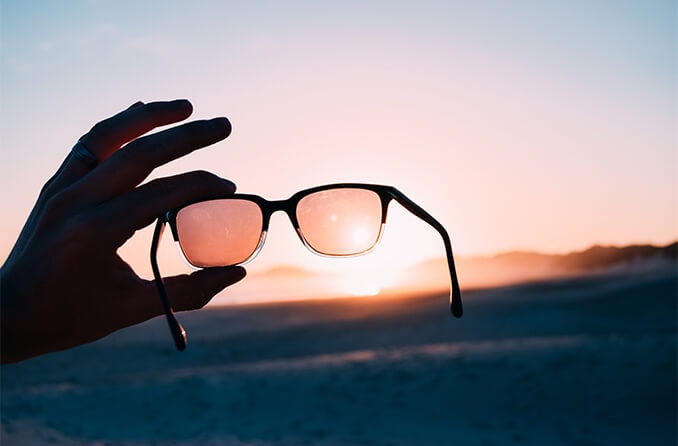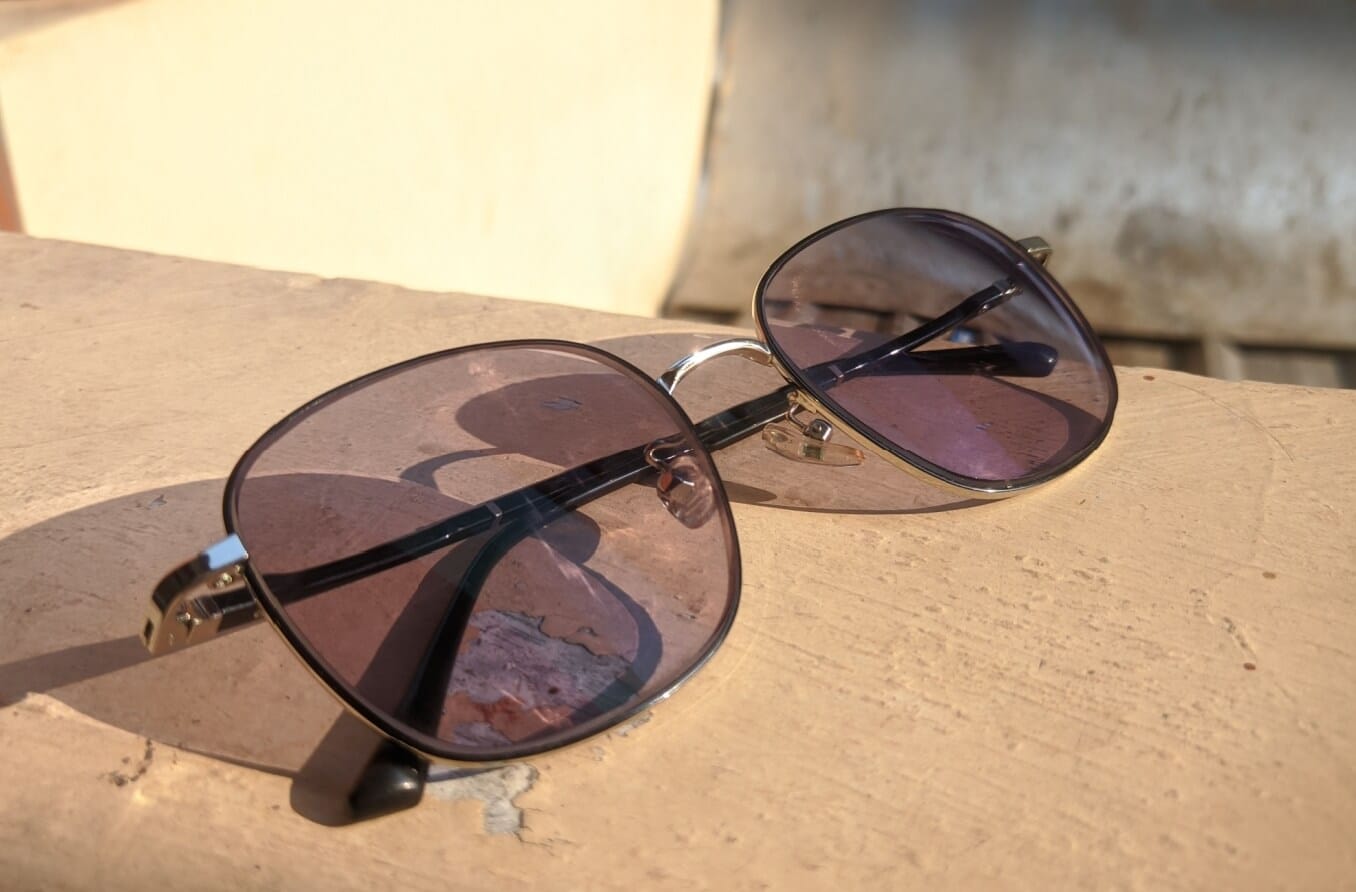You rely on progressive lenses for your everyday eyeglasses, but can you put progressive lenses in your sunglasses?
Yes, you can! Enjoy the same benefits from progressive sunglasses that you experience from your everyday progressive eyeglasses, including clear vision at all distances without those distracting lines separating the different magnifying powers.
Whether you’re working outdoors, driving, playing sports or just going for a walk, progressive sunglasses will protect your eyes from damaging UV radiation and glare while providing the multifocal vision correction.
Another option? Consider progressive lenses in your eyeglasses with photochromic (such as Transitions) technology. You get progressive lenses, UV protection and your glasses adapt going from indoors to outdoors and vice versa.
To learn more about progressive sunglasses, we compiled answers to frequently asked questions about sunglasses that let you see clearly at all distances and protect your eyes from the sun's harmful rays.
What are progressive sunglasses?
Progressive sunglasses have line-free lenses that provide a seamless progression of magnifying power to help you see clearly near, far and in between; plus they provide UV and glare protection.
Progressive lenses are sometimes referred to as “no line bifocals.” But, progressive lenses aren’t just bifocals; they are multifocal. This means a near-endless number of correction gradations, so progressive sunglasses wearers can see objects up close, far away and at all intermediate distances while enjoying outdoor activities.
A wearer's progressive lens prescription can be made into a pair of tinted, polarized or UV-filtering lenses. But note: Because progressive lenses are specially designed and manufactured to incorporate multiple corrective powers, they’re not always available in popular fashion sunglasses with unique frame shapes.
Benefits of progressive lenses in sunglasses
Progressive sunglasses will provide you with the same precision vision correction as progressive eyeglasses while offering additional advantages of protection from the sun’s damaging UV rays and filtering out too-bright light.
This enables wearers to see clearly from near and far through one pair of sunglasses while engaged in outdoor everyday and sporting activities.
Progressive sunglasses also eliminate those pesky lines seen on traditional multifocal lenses, offering a more youthful, modern appearance.
Who can wear progressive sunglasses?
Progressive lenses are ideally suited for people 40 and older who experience presbyopia, which is the deterioration of near vision.
Presbyopia is a natural part of getting older and worsens as we age because our eyes’ lenses gradually harden and are no longer as elastic as when we were younger.
Progressive lenses in any corrective eyewear can be beneficial, so adding them to sunglasses is perfect for anyone who prefers progressive eyeglasses.
Adjusting to progressive lenses in sunglasses
Getting used to progressive lenses, including progressive sunglasses, can be challenging. Those new to progressive eyewear will need to train themselves to look through the part of the lens that provides the clearest vision because the lens power is different at various points across its surface.
Progressive lenses also distort things viewed through their outer edges, which affects peripheral vision. Thus, wearers must get used to adjusting the angle of their head so that their eyes remain centered behind the lenses whenever possible.
For some progressive lens wearers, this adjustment period can be as short as a week. For others, it can take as long as 12 weeks to acclimate. During this time, new wearers may experience symptoms including:
- Headaches
- Dizziness
- Trouble with depth perception
- Difficulty driving
Once the “sweet spot” has been found, progressive lenses in sunglasses can drastically improve the wearer’s experience while performing everyday outdoor tasks.
Where to get progressive sunglasses
If a sunglasses frame is designed to accommodate prescription lenses, there’s a good chance it’s possible to put progressive sunglass lenses in them.
A professional eye care practitioner can help you select frames to fit progressive sunglass lenses that will give you a comfortable visual experience.

